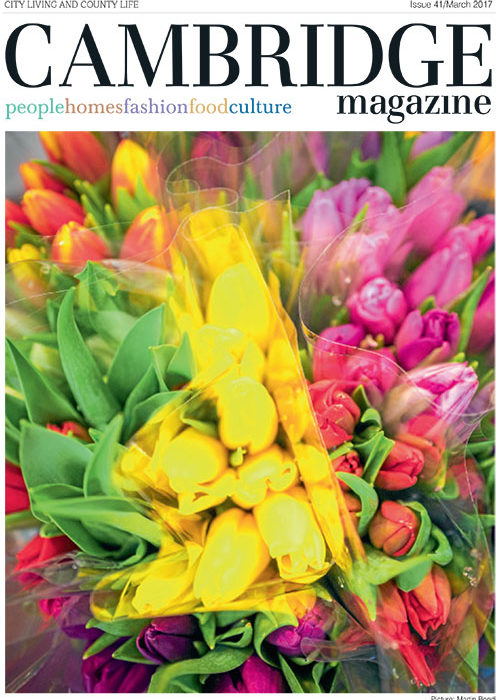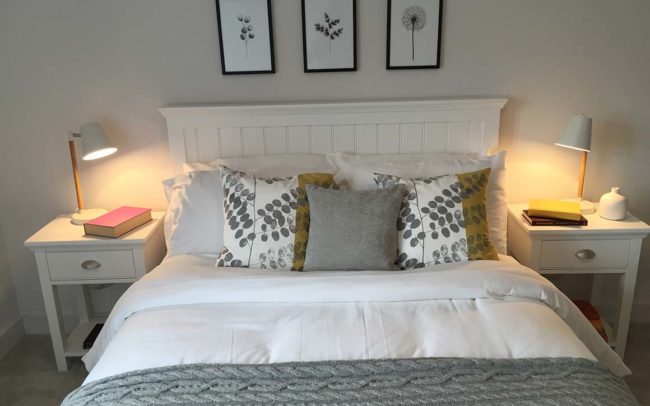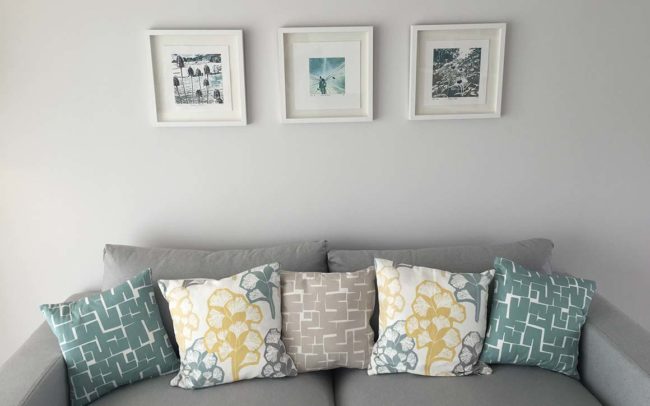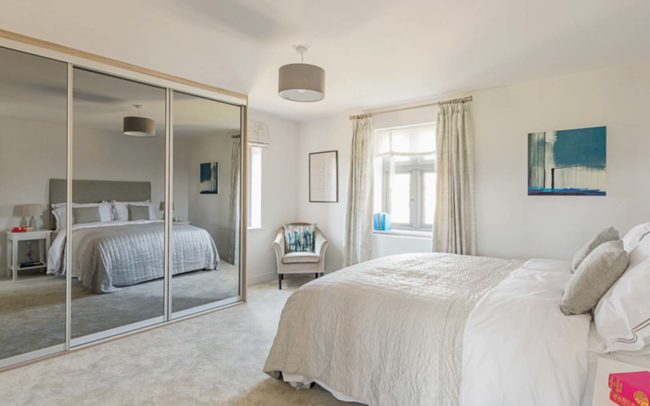CAMBRIDGE MAGAZINE – March 2017
‘We are so pleased to be featured in Cambridge Magazine March 2017 edition – where our design for a show home is described as ‘both cosy and effortlessly elegant’.
Kate Sadler’s latest interior design project – a blank canvas new build in the Ely countryside – is both cosy and effortlessly elegant. Alice Ryan settles in.
Kate Sadler knows how to make a house a home. Her latest floor-to-rafters interior design project, a new build on the edge of Stretham, is testament to that: it’s a show home, yet you’d never know it.
There are books on the shelves and pictures on the walls; the sofa is squishy with cushions; there’s a tea tray laid and waiting on the kitchen table. The scheme is clean-lined and contemporary – and also cosy and inviting. The urge to kick off your shoes and furl into a chair is hard to fight.
The property was, explains Kate, the very definition of a blank canvas: not only was she given creative freedom, she also put the scheme together off-plan, before the house became bricks and mortar. “The developers wanted the interiors to be light and airy; to have a sense of connection to the outdoors,” she explains. “We’re right on the edge of the countryside here: the house looks out on a field of horses. The aim was to make the most of that lovely location.”
As well as sticking to a stormy-sky palette of greys, blues and white, Kate’s used plentiful natural finishes (take the warm wood flooring downstairs) and motifs (a row of wild-flower screen prints by local artist Jo Tunmer, dandelion-clock blinds by Vanessa Arbuthnott). All’s brought together with an uncluttered Scandi sensibility, and the result is both on-brief and utterly lovely.
It’s clear Kate has an artist’s eye for both colour and form; her background is actually in History of Art. On graduating she worked for Sotheby’s, “where I was surrounded by great design – great furniture, great art. I learned not only about beautiful objects, but how they worked together.”
“Looking back, it was mad,” continues Kate. “I had a Degas ballerina sculpture standing on my desk for weeks, waiting to go into a sale. You became so accustomed to being surrounded by these amazing pieces; it really was a privilege.”
It was while at Sotheby’s that Kate got to know acclaimed interior designer Rose Uniacke: dubbed “the queen of serene” by The Sunday Times, she’s known for both her refined style and fondness for fine antiques. Gradually realising interiors was the world for her, Kate went on to work with Rose.
“We did a lot in Chelsea. There was one project – an enormous bachelor pad – that I always remember: lots of leather, lots of fur. The client was only a young guy, younger than me, and he’d just been given this huge house. . .” The work was creative, challenging and hugely exciting; Kate knew she’d found her niche.
After marrying and having her two children – Isabella, now 10, and Rufus, 6 – Kate then moved out of London to return to her hometown, Cambridge: “I’d grown up here and loved it, and I wanted the same experience for them.”
Setting up her own company, Kate Sadler: Interior Design & Project Management, seemed a natural next step. The first solo project came two years ago and she’s never looked back: “One thing’s led on to another. It’s all been word of mouth – I’m very lucky.”
The project management side of the business is as busy as the design. Far from being a luxury service, Kate says it can be very cost-effective; among her many skills is sourcing just the right craftspeople, at just the right price.
The same applies to her interior schemes, which pair High Street finds with judiciously selected star-of-the-show pieces. Walk into the sitting room in Stretham and your eye is magnetically drawn to a stand-out Eames
rocking chair (which, deliberately positioned in front of the French doors, in turn invites you to look outside). The armchair by the front window, in contrast, was a nifty online purchase.
Among Kate’s biggest projects thus far was a Victorian village rectory, whose owners wanted a top-to-toe revamp and restyle. “They wanted a contemporary feel, to completely modernise it,” she explains. At the other end of the scale, another client needed help with his cluttered study; after Kate had reimagined the space, both redecorating and rationalising its contents, it was a whole new room: “It was lovely to go back and see him enjoying it; the room was working for him again.”
Kate and her children recently moved from a Victorian terrace to a 1960s bungalow, a bit of a fixer-upper. Switching period of property has required an interiors rethink of her own: “All interior design starts with the building itself. I kept some furniture and got rid of the rest; a different house can require a different look.”
Single-level living is, adds Kate, very practical when you’ve got young children; even when they’re off in their bedrooms, there’s a sense of togetherness. “When I’m working with a client, those are the kinds of things I have to consider: their family, their lifestyle, their personalities. . . There’s no point putting a high shine worktop in a kitchen if the family’s lifestyle isn’t in-keeping: as soon as someone puts a coffee cup down on that top, it’ll need a polish.”
Kitchens are, concedes Kate, the biggest challenge, because they have to be high-performance as well as lovely to look at and live in. Living spaces are, in contrast, a favourite. “That’s where people spend most of their time. Some people might like a reading corner, or a study area, or a play area; the pleasure is in bringing it all together, and making a space they’ll really use and enjoy.
“Having a home where you feel yourself relax as you walk in the door is a wonderful thing, and for all kinds of reasons some people don’t have that,” adds Kate. “To leave a project knowing the client’s home is really working for them – that it’s become that place where they can truly relax – is brilliant. As a designer, that’s what you’re aiming for.”
Here are Kate’s top three tips for freshening up a room without spending a fortune:
- Move the furniture around. “The lay out you’ve got – have maybe always had– isn’t necessarily the best. Try shifting the furniture around, working around the room’s focal point, such as the fireplace, and see what the possibilities are.”
- Give it a lick of paint. “Painting the walls is a pretty low-cost way to make an enormous difference. Bear in mind the colours of your existing furniture and accessories, though, unless you’re really wanting to start from scratch.”
- Look at your lighting. “Investing in a few new lamps can completely change the feel of a room. A single light source in the centre of the ceiling is never going to produce a nice atmosphere. Think about putting lights at different levels and in dark corners.”
Contact Kate on 07917 726 869 or kate@katesadler.co.uk




